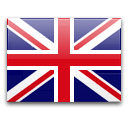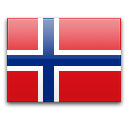

The story of Lofoten Wool
When textile craftswoman Ragnhild Lie learned that Norway’s home-grown wool is largely exported abroad, whilst local knitters were sat at home working with imported yarn, she decided it was time to take action. Time to take back the wool and the cultural heritage of the craft around it.
Using her extensive knowledge and experience of working with wool Lie decided to build an audience-oriented workshop around native breed sheep, wool and craft, based at her small farm in the Lofoten archipelago. In 2013 the first Old Norse Sheep arrived at the farm, and the following year Lofoten Wool was launched.
Since the beginning sustainability has been at the heart of everything we do. Our focus on local production, traditional craft skills and high-quality products has won us recognition both at home and abroad. Everything we do is rooted in the mindset that quality should endure over time, and that a sustainable, low impact approach is the best way to achieve this.
The craft

Without the wool, people would never have been able to settle in the North. People have learned countless techniques in joining fibers and threads into textiles, and today knitting has rightly become popular once again. With a few pins, a yarn you can create beautiful, practical garments that provide breathable warmth and comfort.
When woven, wool becomes even more versatile, producing cloth weights suitable for clothing, upholstery and interiors.
At Lofoten Wool we believe in small scale, localised production. Our yarns celebrate the abundance of natural raw materials available locally, and we carefully design our products to nurture and support traditional craft skills through local community production.
We continue to raise native breed sheep, which play a valuable role in maintaining a healthy landscape through traditional grazing methods that promote biodiversity. Our herd of Old Norse sheep are a hardy breed, typical of the area and have been a natural part of Norwegian fauna for hundreds of years. Saved from the brink of extinction, these animals have wool that is extremely robust and durable. In addition to our own sheeps wool, we source wool from a number of local farms that share our sustainability principles.
Processing of the yarn begins with sorting the wool by colour and quality, before it’s sent by the coastal express Hurtigruten down to Hillesvåg Wool Mill to be washed and spun into beautiful yarn. Some of the yarn is sent to Krivi Vev at Tingvoll, where our fabrics are woven to be used for a range of applications.
Once it’s been spun, we plant dye the yarn at our workshop, achieving quality assured colors that date back to the Viking Age. In August, we and our friends pick the tansy flower and use this to create different shades of yellow. For red, we use madder root, whilst blue hues are developed by dipping the yarn into indigo baths. Each color batch has its own unique shade resulting from the natural variations within nature and our part within the dying process. When we colour blends of white and gray yarn we get many options for color combinations.
Our Crossbred-collection consists of both natural and plant dyed yarns from Norwegian White sheep raised at Røst and in Vestvågøy in Lofoten. The wool from these sheep are soft fine fibers which gives a range of possibilities both for knitting and woven garments. We use the white crossbred wool and we also include the wool from the so called black sheep, the mix of these gives us a range of grey to black/brown tones.
The other yarn collection is made from the more robust yarns result from the native breeds; our own Old Norse sheep and Spæl sheep farmed at Flakstad and Vestvågøy.

Designed in-house, our Lofoten Wool knitting patterns are often suited to both genders and offer a timeless look that can be achieved without advanced skills. Our garments and products are knitted by local hands - we work with many knitters across the archipelago! The woven products we refine in the workshop with cutting, fringing and finishing. All work is done for the love of the craft.
In keeping with tradition, our mission is to use as much of the sheep as possible. Besides from the wool, yarn and skin, we make soap from the fat. The close cooperation with our local slaughterhouse, Horn's slakteri, is invaluable in making this possible. Also all the slaughter goes to the restaurant FANGST at Hattvika Lodge in Ballstad where they make fantastic dishes from it.
The people

Ragnhild Lie
The founder of Lofoten Wool, Ragnhild lives and work on the farm where she continues to manage and develop the business. Ragnhild has knitted, chrochet, braided, sewn and woven since she was little. In 1997 she graduated with a MA in Textiles from Bergen school of Art, and her broad range of textile-based experience includes fine art, theater and education. She has worked at Sjølingstad Wool Mill, studied tapestry at Oslo University College of Art and Design, taught at Lofoten School of Arts for kids and led courses from kindergarten to university level. She is a renowned lecturer and textile artist within the textile field in Norway.
Ragnhild loves her sheep; from walking around the fields putting up fences, to keeping a close eye on them during the lambing season and visiting them in the hills where they spend the summer grazing. In short, living closely with nature and her flock.
Leander Berg Fredriksen
Leander helps out on the farm throughout the year and is an agronomist with a wide knowledge of sheep farming. The first farmer to introduce rare breed Spæl sheep to the Lofoten Islands, he continues to breed them on his farm situated on the north side of the Flakstad Island. You’ll find Leander’s Spæl sheepskins available from our shop.
Leander is always on hand to help with sheep shearing, feet clipping and administering annual vaccinations. He also helps with fencing, summer shepherding and feeding during the winter.


Solveig Elton Jacobsen
Solveig has a degree in Fashion Design and broad experience within the industry. She has had her own clothing label, dyed fabrics and designed embroideries for Alexander McQueen in London, and travelled the world with production and design inspiration for the commercial brand Bikbok. Now, having moved to the most beautiful peninsula in the world, she gets to work with what she loves the most; a great mixture of numbers, design, concept development, contact with people, animals and closeness to the craft.

The knitters
All our knitted products are handknitted in Northern Norway by skilled ladies who sits at home and knit.
Some of them like to knit socks, others mittens. Some like the soft 2 ply yarns from them lambs wool, others prefer the chunky wool from the Old norse Sheep. Together these experienced and competent hands creates a range of products that we sell as finished products or knitting kits. As well as test knitting our ideas and patterns some also creates designs for us and are involved in the product development process.
The sheep
These animals are clever. The leader of the pack is Sigrid, The Minister of Internal Affairs. She is the oldest of our sheep and makes sure all of them behave like sheep. The Minister of Defence is Rulle, who survived rolling down the field when she was born! She closely follows everything that happens outside of the flock and is often found up on the hill scouting. Our flock of 30 ladies spend their lives together, until November when a new male sheep (a Ram) is introduced from another farm. Mating usually begins in December, with the Ram using scent to keep track of who´s been fertilized and who´s on heat – until his job is done!
Of all the native breeds, Old Norse sheep are the oldest species found in Norway and often called the Viking sheep, as the Vikings are believed to have brought them on their voyages west. Research has indeed found they are related to the sheep from vesterled; namely Iceland, the Farao Islands and Shetland. Hardy and sure-footed, Old Norse sheep generally give birth without difficulty and show good mothering skills, with a natural instinct to watch for danger throughout the year.



Høystålet studio and shop
OPENING HOURS 2025
December
Monday-Friday: 10 - 16
Saturday: 11 - 16
Sunday: closed
We close our doors for the holidays from Tuesday 23.12. and open the shop again 05.01.2025. Welcome to visit us in the New Year!
We are usually around after the opening hours, please call or email us.
Steineveien 294
8340 Stamsund
+47 90 76 50 80
post@lofoten-wool.no
Welcome to Lofoten's wool, handcraft and plant dyeing workshop on the island of Vestvågøya, located at Steineveien, midway between the towns of Stamsund and Leknes. Here, you’ll find our farm shop stocks a selection of meat products as well as sheepskins, soap, silver buttons and a small range of other locally produced products.
We stock a wide range of hand knitted and woven wool products, yarn and knitting patterns. In addition to the items found on our online store, we sell unique sweaters, hats, socks, scarves and yarns of limited-edition dye batches.
On the farm we rebuilt the old barn to house our shop and workshop, named Høystålet, and this is also home to our flock of Old Norse sheep, who are free to come and go as they please from their shelter underneath.
We welcome groups, small and large for lectures and talks, were Ragnhild and the rest of our staff are delighted to introduce you to wool production and the story behind it. We can tailor visits as desired, just get in touch for a chat!



